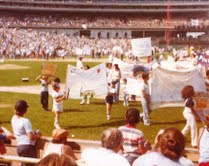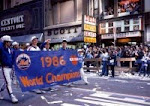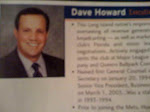Attention Wilpons...there's a
new Dodgers book you may want to read.
O'Malley next faced the issue that would define his career. The Dodgers played at Ebbets Field in Flatbush, but white flight to Long Island was decreasing attendance at the 1913 relic. O'Malley wanted to build a new stadium, with more parking spaces for his suburban-based fans. His good-faith efforts to keep the Dodgers in the borough included an offer to finance a domed ballpark.
He lacked one element: land. At every turn, D'Antonio writes, New York City power-broker Robert Moses stymied O'Malley by refusing to allow him to buy public property. Building on research from two excellent books, Neil Sullivan's "The Dodgers Move West" and Michael Shapiro's "The Last Good Season," D'Antonio concludes that Moses "condemned the Brooklyn stadium idea" and was the true villain.
It's also true that, as he dickered with Moses, O'Malley looked beyond Brooklyn. He saw how the fortunes of the Boston Braves and the Philadelphia A's had improved when they moved to, respectively, Milwaukee (1953) and Kansas City (1955), and that advances in aeronautics and television technology made the western U.S. an accessible, attractive option. Meanwhile, local newspaper columnist Vincent X. Flaherty bombarded O'Malley with "insider advice" about the L.A. situation.
From the
LA Times.
www.metspolice.com














Post a Comment